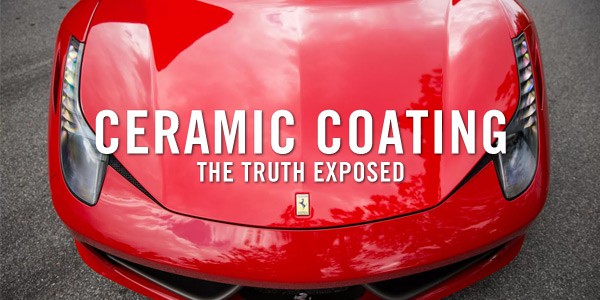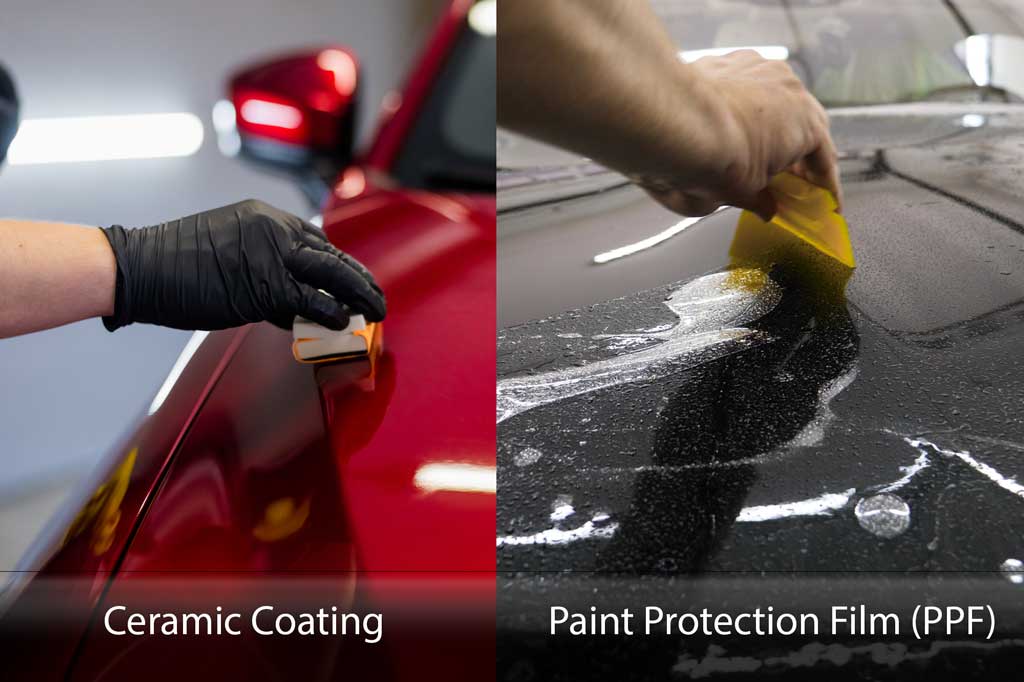What to Expect Throughout Your Ceramic Coating Application Process
What to Expect Throughout Your Ceramic Coating Application Process
Blog Article
The Duty of Ceramic Covering in Safeguarding Your Car's Paint From Environmental Damage
Ceramic coating has actually become a sophisticated remedy for automobile proprietors seeking to preserve the stability of their vehicle's exterior. By developing a durable chemical bond with the paint, this sophisticated technology offers a powerful obstacle versus numerous ecological threats, such as UV rays, acid rainfall, and pollutants. Understanding the thorough advantages and the ins and outs of the application procedure is vital for maximizing its performance. As we explore the nuances of ceramic coating, it ends up being noticeable that the choice to apply this safety action could considerably influence your lorry's durability and visual.
What Is Ceramic Covering?
Ceramic finishing is an advanced liquid polymer put on the external surfaces of a vehicle, made to supply a long lasting layer of protection for the paint. This innovative option forms a chemical bond with the car's manufacturing facility paint, creating a hydrophobic and resistant shield. The coating is composed of nanoparticles that complete the tiny imperfections in the paint, leading to a smooth surface area that improves gloss and shine.
Normally, ceramic finishings are available in numerous formulas, enabling for different levels of defense and long life. While some items can last for a number of months, others offer security for a number of years, depending on the density of the application and ecological variables. The application procedure requires thorough preparation, consisting of cleaning, sanitizing, and brightening the lorry's surface to guarantee ideal adhesion of the finishing.

Benefits of Ceramic Layer
One of the main benefits of applying a ceramic finishing is the remarkable defense it offers to vehicle paint. This advanced finishing develops a durable layer that guards the automobile's surface from a variety of environmental risks, including UV rays, acid rainfall, bird droppings, and tree sap. By giving this durable protection, ceramic coatings significantly minimize the risk of fading and etching, preserving the vehicle's visual allure in time.
In enhancement to protection, ceramic finishings are renowned for their hydrophobic residential or commercial properties, which ward off water and dust, making it easier to keep a clean vehicle. This self-cleaning effect minimizes the regularity of cleaning, conserving both time and sources. Additionally, ceramic finishes enhance the depth of the paint's gloss, causing a vivid and refined look that raises the general appearance of the car.
Another noteworthy benefit is the longevity of ceramic layers. Unlike standard waxes or sealers that call for frequent reapplication, ceramic coatings can last a number of years, offering a cost-effective service for vehicle proprietors looking for lasting security. Generally, spending in ceramic covering results in enhanced resilience, reduced upkeep, and sustained visual appeal for auto paint.
Exactly How Ceramic Covering Works
A ceramic covering runs via a chemical bonding process that creates a protective layer on the automobile's paint surface. This ingenious remedy uses sophisticated nanotechnology, where tiny bits of silica are put on hold in a liquid form - ceramic coating. Upon application, these fragments bond with the manufacturing facility paint, developing a hydrophobic and durable layer that enhances the vehicle's surface area
The major part of ceramic finishings, silicon dioxide (SiO2), adds to the covering's stamina and resilience. When treated, the finish changes into a hard, glass-like coating that guards the paint from environmental contaminants such as dust, UV rays, bird droppings, and tree sap. This molecular bond leads to a sites surface that is not only immune to scratches yet likewise much easier to cleanse, as dust and crud are less most likely to stick.
In addition, the hydrophobic homes of ceramic finishings cause water to bead and slide off, decreasing the opportunities of water places and mineral down payments. This safety obstacle properly prolongs the life of the paint and maintains the automobile's visual appeal, providing car owners a durable service for paint protection.
Application Refine of Ceramic Coating
When considering the application of ceramic covering, prep work is key to achieving optimum outcomes. Any kind of scratches or flaws should be dealt with at this phase, as the finish will certainly bond with the surface area underneath.

Ceramic finish is after that applied in small areas, normally utilizing an applicator pad. The vehicle should be left to treat in a controlled setting to allow the finishing to completely bond with the paint.
Long-Term Maintenance and Treatment
Attaining a successful ceramic layer application sets the structure for lasting security, yet appropriate maintenance is essential to maintaining its advantages. Routine washing is necessary; making use of a pH-neutral car shampoo will aid maintain the covering's integrity without creating damage. Prevent automated automobile cleans that use abrasive products, as they can jeopardize the covering's surface area.

Additionally, using a ceramic finish maintenance spray can boost the existing layer, providing an additional increase in security and sparkle. It's recommended to execute this every three to six months, depending upon ecological direct exposure.
Finally, auto parking in shaded locations or using automobile covers can protect against long term direct exposure to harmful UV rays and ecological pollutants, further prolonging the life of your ceramic layer. By sticking to these upkeep techniques, you can guarantee your car's surface continues to be secured and visually appealing for years ahead.
Final Thought
In recap, ceramic covering functions as a crucial protective procedure for automobile paint, successfully shielding vehicles from a range of ecological risks. Its capacity to develop a robust hydrophobic barrier not just boosts aesthetic appeal however also significantly decreases the regularity and strength of upkeep called for. The resilient nature of this sophisticated polymer underscores its worth Get More Information in protecting car honesty and look, ultimately adding to a much more durable and aesthetically enticing auto finish.
Ceramic finishing is an innovative fluid polymer used to the outside surface areas of a car, developed to provide a long lasting layer of security for the paint. Ceramic coatings enhance the depth of the paint's gloss, resulting in a vivid and refined appearance that raises the general appearance of the vehicle.
A ceramic covering operates through a chemical bonding process that produces a safety layer on the car's paint surface area.The major element of ceramic finishes, silicon dioxide (SiO2), contributes to the covering's strength and strength.In summary, ceramic layer offers as an important safety step for auto paint, successfully protecting automobiles from a variety of environmental risks.
Report this page